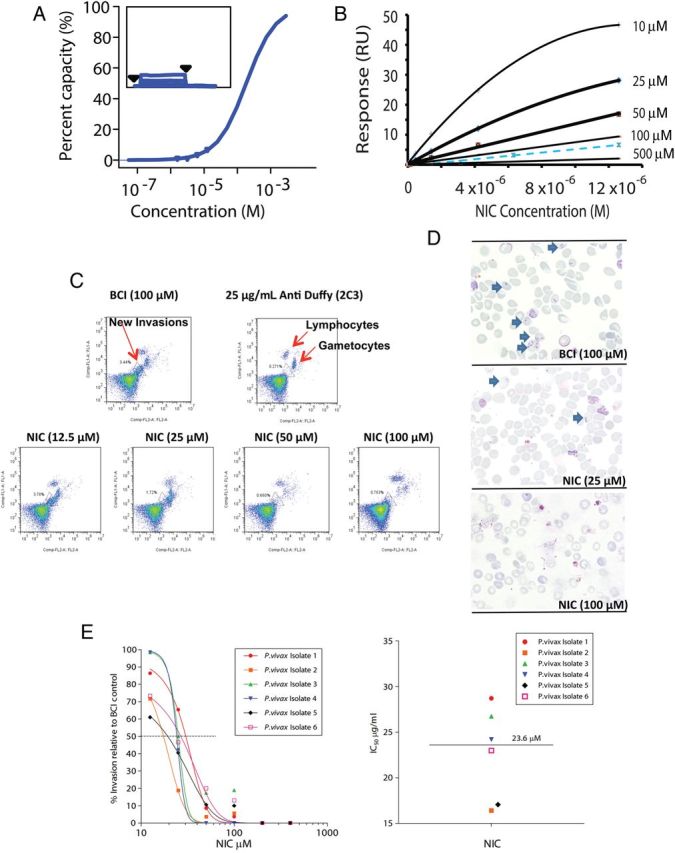Figure 4.

NIC binds to PvMSP-119 and shows anti-invasive activity against clinical isolates of Plasmodium vivax. A, SPR measurements using recombinant PvMSP-119 reveal specific binding of NIC with the target antigen. Immobilization, the binding assay and the determination of the affinity were performed as in Figure 2. B, Experimental values of Req for the corrected sensorgrams were compared to the simulated values for KD = 100 µM and 500 µM. The value for the affinity constant cannot be determined from equilibrium analysis (see results) and was estimated to be between these 2 values. C, An ex vivo assay on 6 Thai isolates of P. vivax showed that NIC had a dose-dependent inhibitory effect on the invasion of human cord reticulocytes by P. vivax, as determined by flow cytometry; BCI as well as an antibody against Duffy protein served as negative and positive controls, respectively. D, Microscopic analyses of the Giemsa-stained smears collected from inhibitor-treated cultures reveal blockage of invasion by P. vivax in presence of NIC. E, Compiled data derived from the treatment with NIC of 6 Thai P. vivax isolates analyzed using a nonlinear sigmiodal model provide a median IC50 of 23.6 µM. Abbreviations: IC50, half maximal inhibitory concentration; NIC, 2-butyl-5-chloro-3-(4-nitro-benzyl)-3H-imidazole-4-carbaldehyde.
